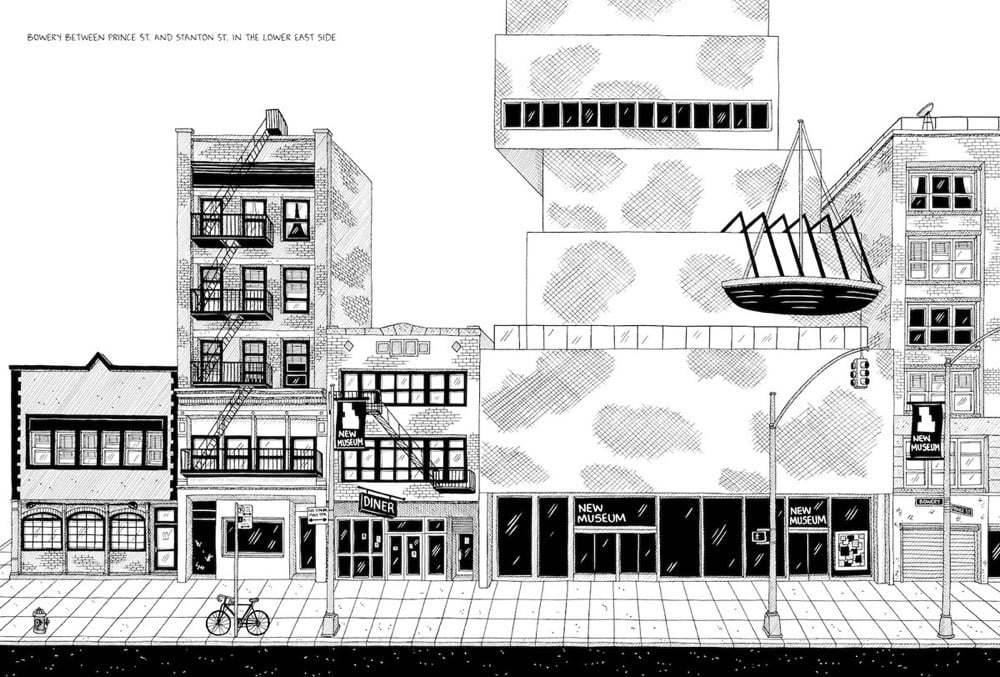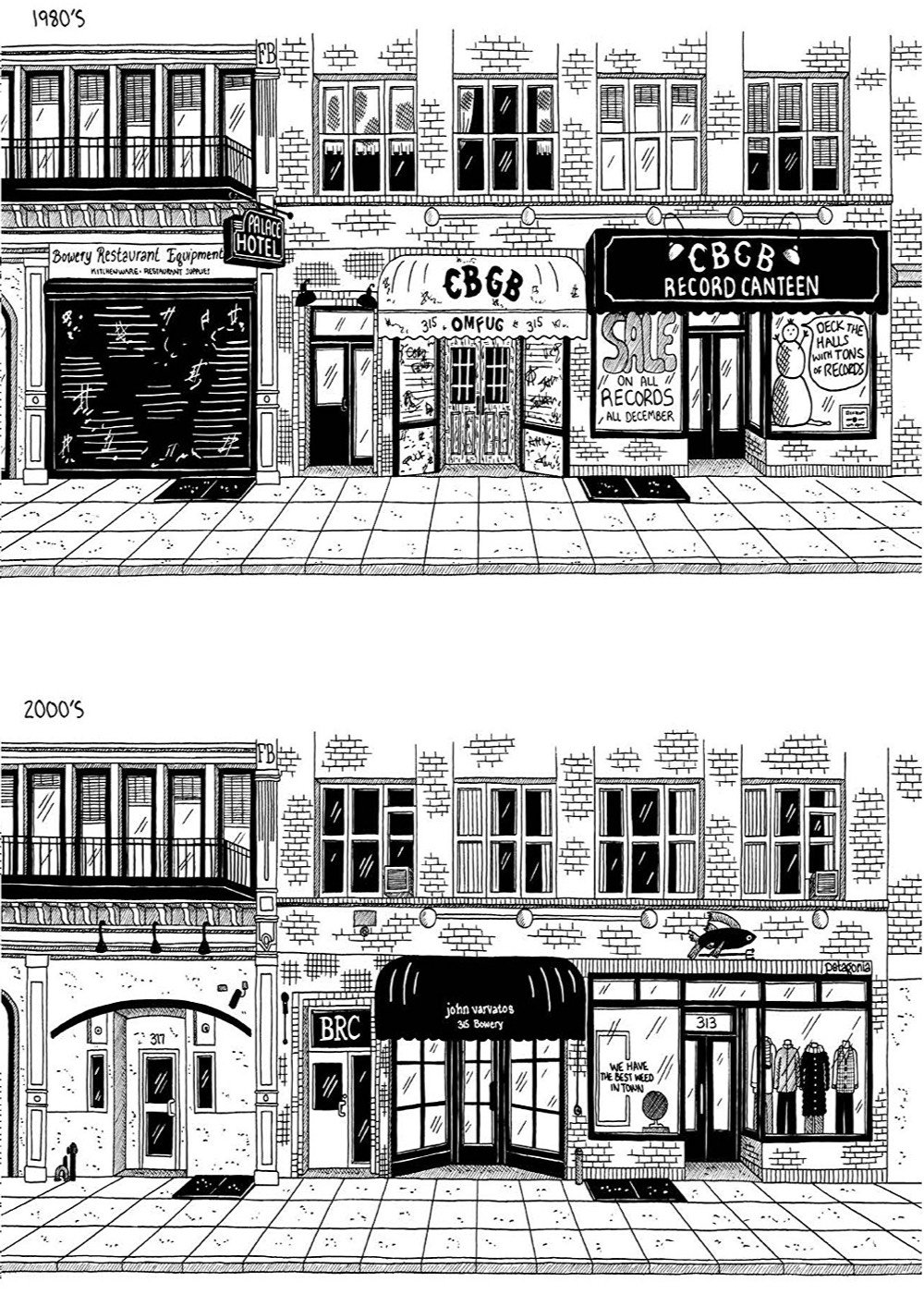Tenements, Towers & Trash: An Unconventional Illustrated History of New York City
I really like these drawings of NYC with a historical bent by illustrator and “amateur historian” Julia Wertz.


They’re from a book Wertz wrote & illustrated called Tenements, Towers & Trash: An Unconventional Illustrated History of New York City. Gothamist recently interviewed Wertz about the book and her work.
Q: Bob Dylan (and my boss, Jake Dobkin) both like to exclaim that “nostalgia is death.” Which probably says more about them, and their own particularly complex relationships with nostalgia, than anything else. But do you think of yourself as a nostalgic person? How does nostalgia play into your appreciation of the urban landscape?
A: I understand what people mean by that expression, but it categorizes nostalgia in too simple a way. Nostalgia is like an intoxicant — in moderation it can be a rewarding experience, but if abused/overused, it becomes toxic. To indulge in nostalgia is to romanticize the past and stop living in the present. This could be totally fine for short periods of time, just a nice way to remember a pleasant time you experienced, but if it becomes a way of thinking, it ruins the present because there’s no way the present moment can compare to a fabricated, romanticized version past. Nostalgia has a way of erasing the shitty parts of reality. Like when people are nostalgic for, say, NYC in the 1800’s — the horse and buggies, the handmade shop signs, the elaborate suits and dresses — they’re forgetting (or perhaps never knew) that the city then was a filthy cesspool of trash and sewage, disease was rampant, and the clothing was insufferably hot and restrictive, and sometimes even deadly for women cooking with open flame.





Stay Connected